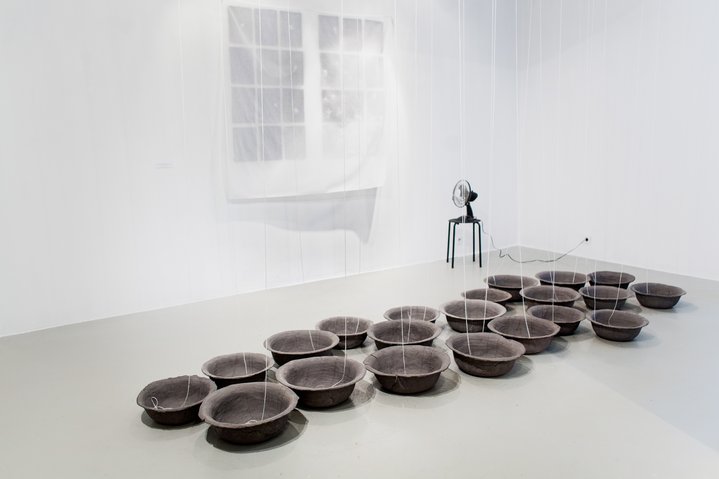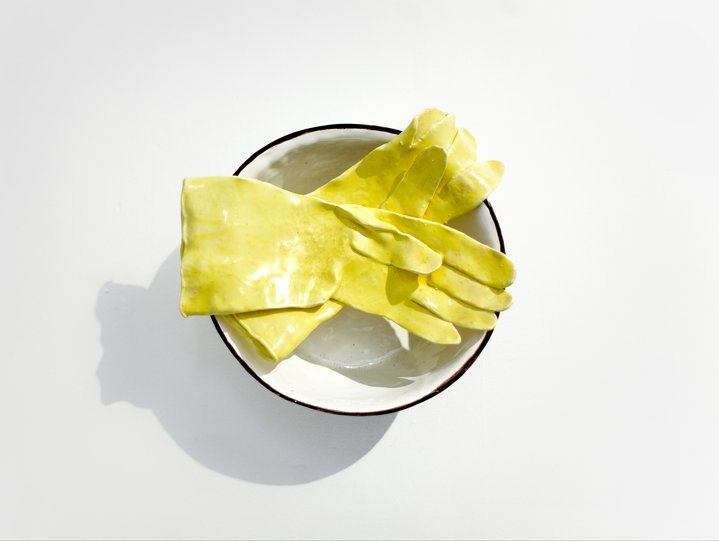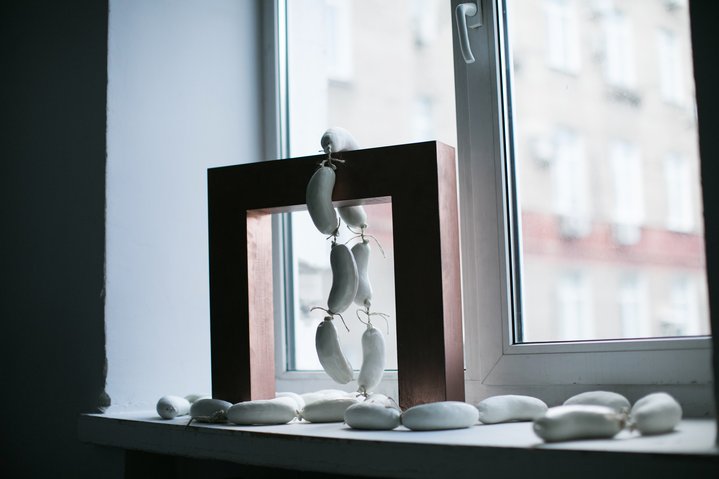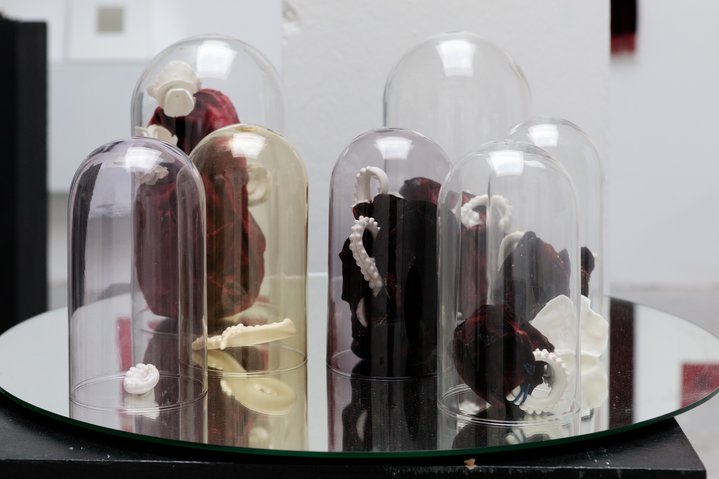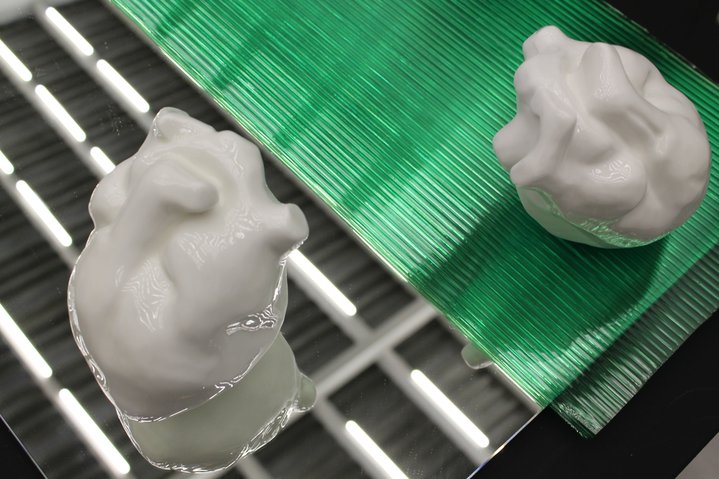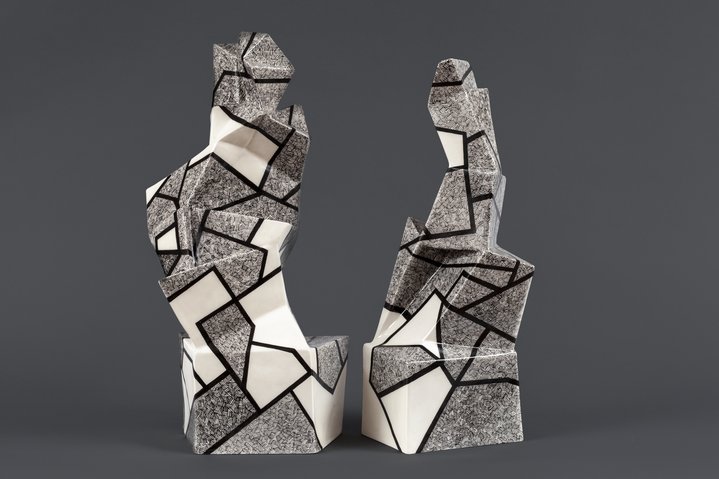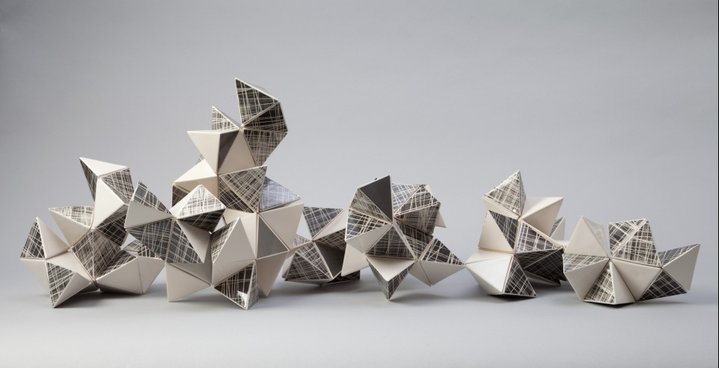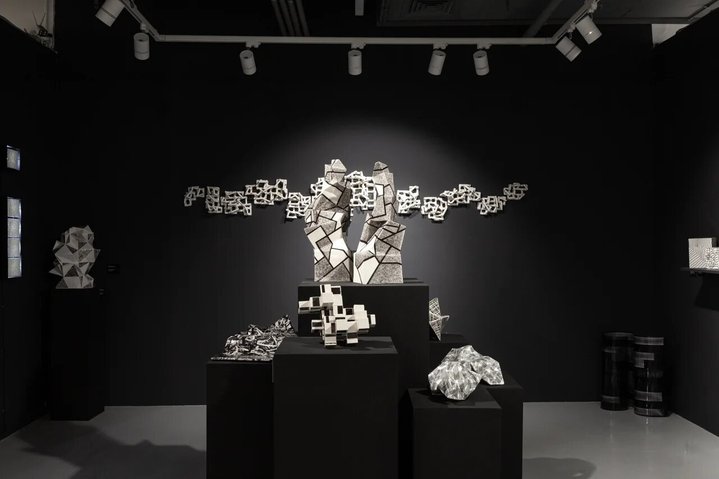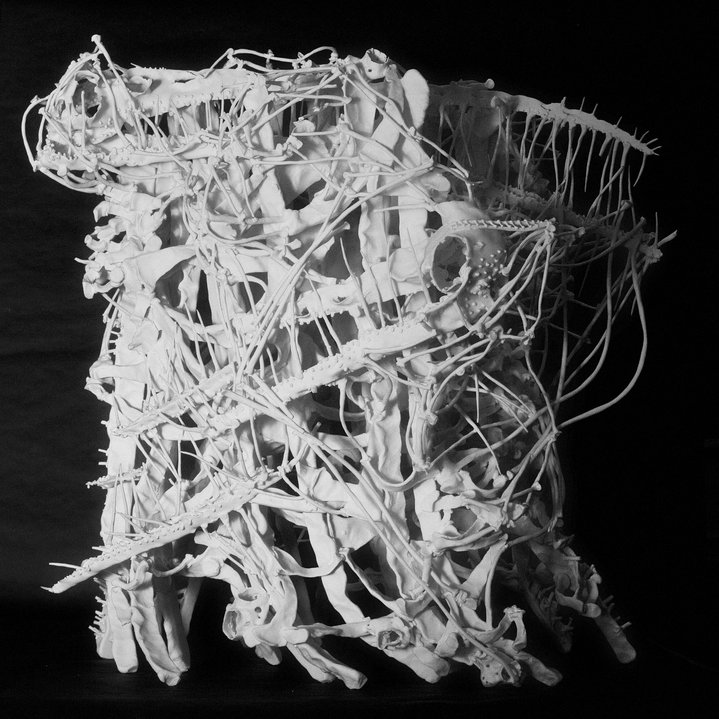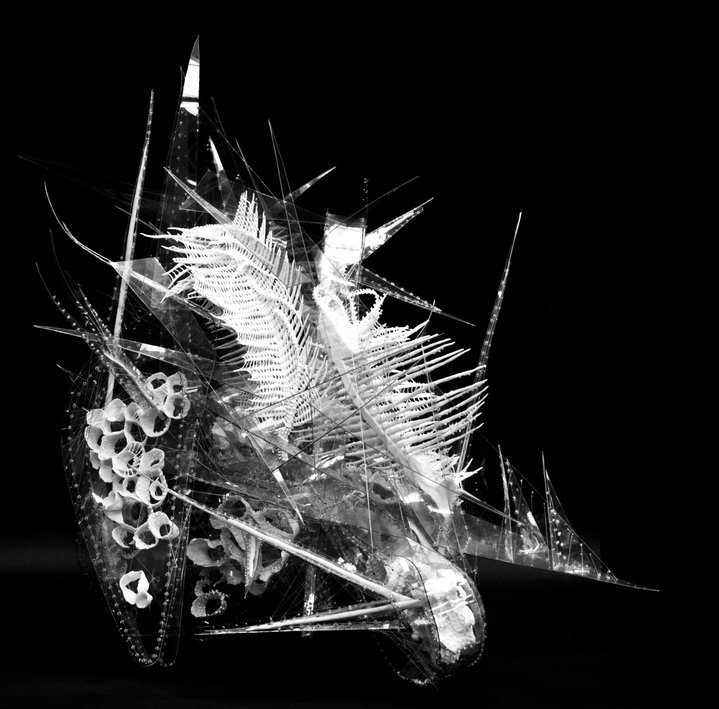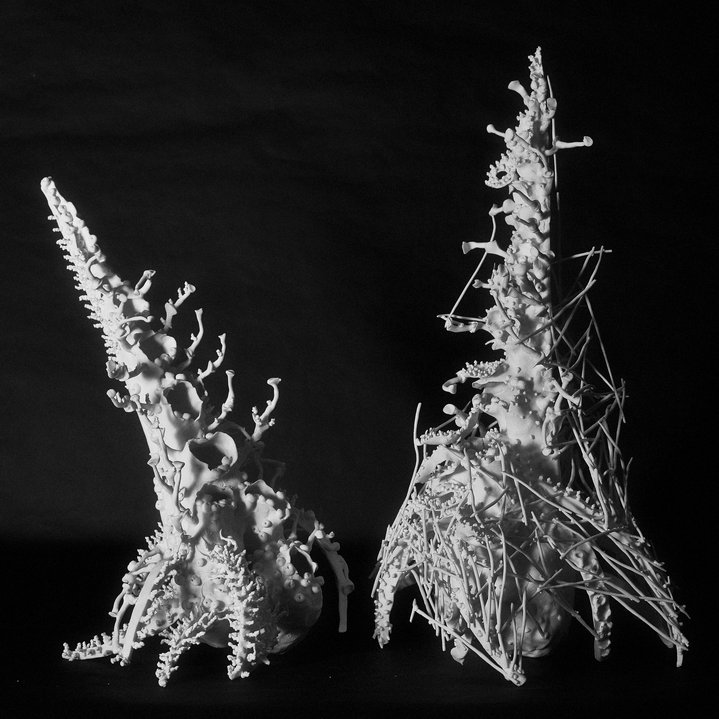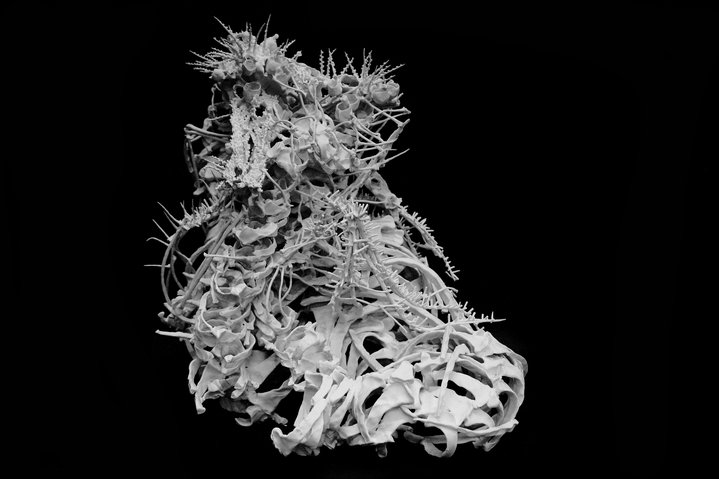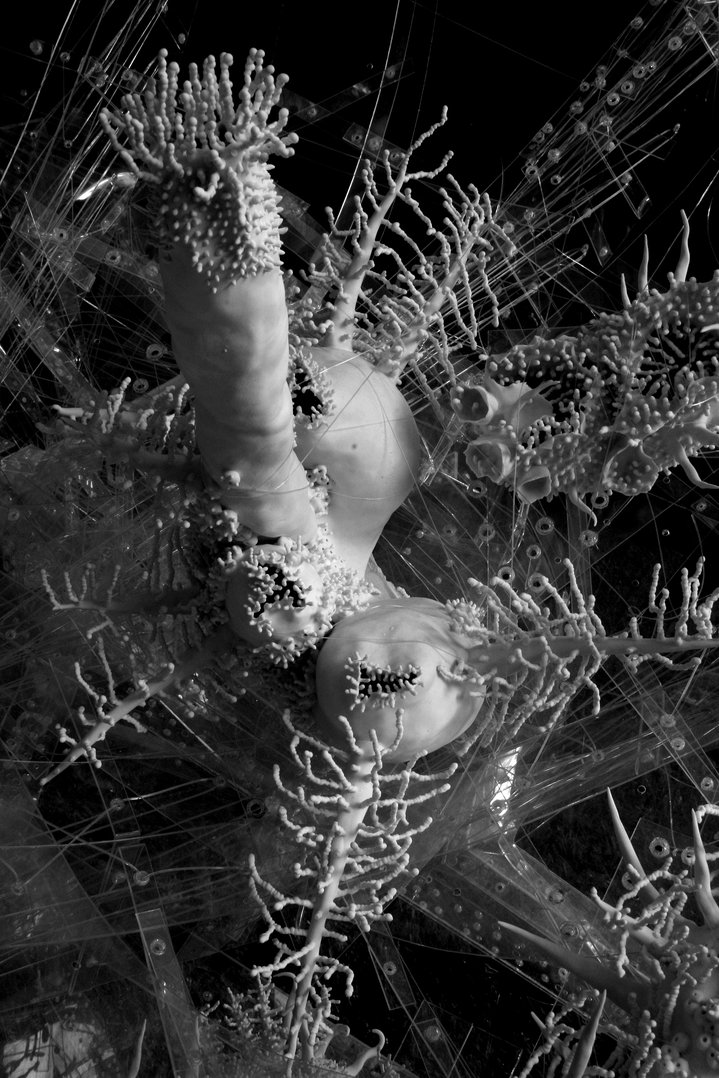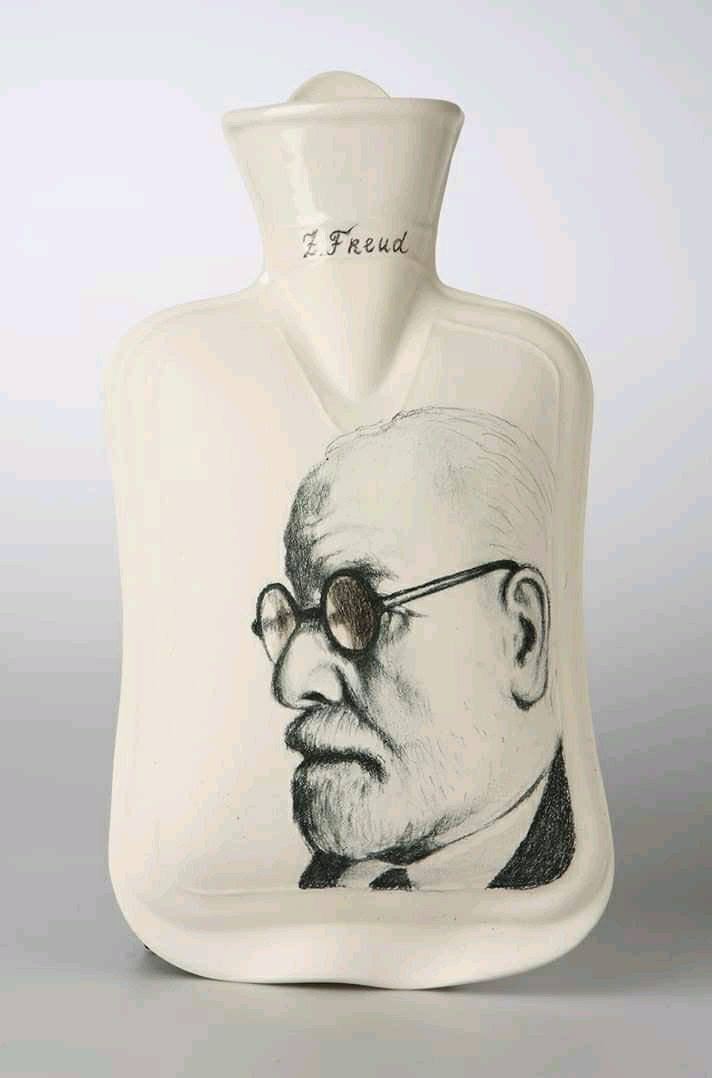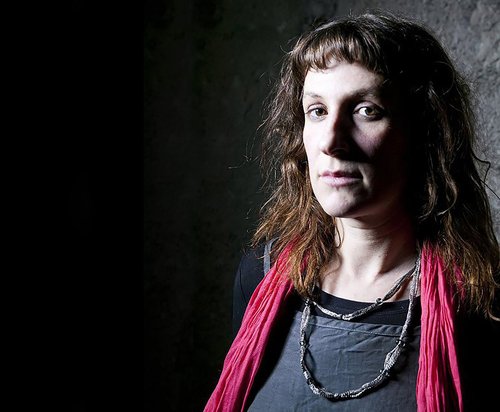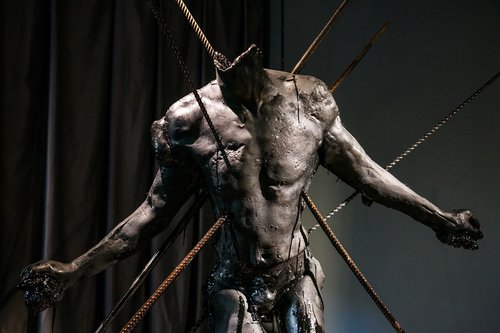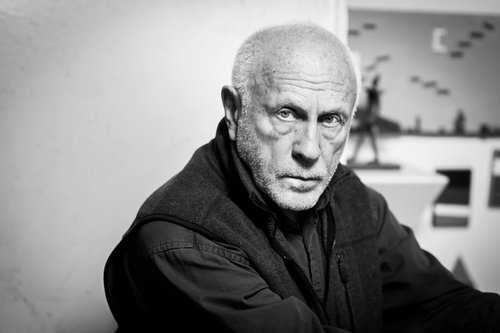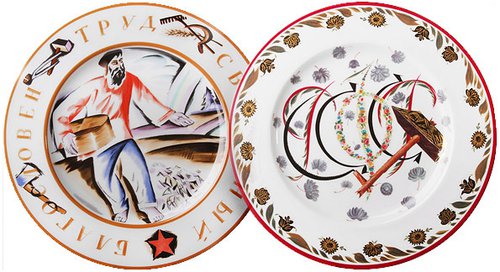Fragile beauty: ceramic art in Russia
Pottery counts among the oldest crafts on earth, yet is only now getting more and more popular as a medium of contemporary art. Meet five Russian artists who work with ceramics in unconventional ways.
Daria Krotova-Schlosser
An artist, neuropsychologist and art critic, Daria Krotova-Schlosser (b. 1971) has been working with ceramics in Russia and France since 1997. She has also developed a ceramics course for children with autism and Asperger’s syndrome at the State Tretyakov Gallery. At present, she is based in the Provence region in France. She often uses unfired clay for her conceptual installations and sculptures: untouched by fire or glazing, the material reveals its raw, natural substance. Visually arresting, her slightly surreal works give a lot of food for thought to the viewers. Her riddles always avoid direct interpretation, be it a host of angelic faces flying in the air or scattered porcelain bones from a fictitious archaeological site in Butovo, one of Moscow’s remote dormitory suburbs.
Daria Neretina
Born in Moscow in 1988 and based there, Daria Neretina studied ceramics in her home town and at London’s Goldsmith university, where she took part in a student exchange programme. From the very beginning of her career she started to develop a very complex visual vocabulary. Neretina’s installations combine her own ceramic works with other materials, such as glass, wood and metal, as well as found objects, ranging from dried plants to toy railroads. The artist is fascinated by the beauty of organic forms: fruits and plants often recur in her works. She tries to re-interpret their traditional symbolic meanings, weaving them into a tangled web of allusions and not-so-obvious cultural references. Her works have been exhibited at the Moscow Museum of Modern Art and other museums, as well as private galleries in Moscow, Venice and Milan.
Ludmila Krutikova
The visual language of Moscow-based Ludmila Krutikova is an unconventional combination of graphics and ceramic sculpture. A skilled and passionate draughtsman, she explores the realm of geometric abstraction, both in 2D and 3D. Her colourful works can exist as single objects, but often develop into complex installations composed of many similar elements. The artist recently started to incorporate light into her sculptures. Her new series ‘Litophania’ consists of porcelain panels lit from behind, which can look strikingly different, depending on the lighting conditions. With the light on, they remind one of exquisite monochrome graphics, emitting a soft heart-warming glow. When the light is turned off, the interplay of shades instantly gives the work its third dimension: drawings turn into bas-reliefs as if by magic.
Daria Surovtseva
“I create less an object than the vibrations that emanate from it,” Daria Surovtseva says about her works. Born in Moscow in 1980 and based in Paris, she comes from a family of sculptors. Surovtseva’s favourite materials are porcelain, stainless steel and plexiglass, which she often combines to create mysterious sophisticated forms, vaguely reminiscent of corals or fossils. “The subject of my sculpture is unreal, ephemeral,” she says. “Only the movement of its impulses and the currents that animate it matter.” Her creations are both abstract and organic, lifeless and alarmingly alive. Surovtseva’s works are included in the collections of the State Russian Museum in St. Petersburg, the Moscow Museum of Modern Art, the State Tsaritsyno Museum and Nature Reserve in Moscow, among others.
Sophia Israel
Moscow-based Sophia Israel (b. 1983) studied ceramics at the Bezalel Academy of Arts and Design in Jerusalem. The versatile artist creates witty conceptual sculptures, as well as quirky, yet fully functional teapots and cups, adorned with human and animal figures. She even tries to breathe new life into her fragile creations by shooting ceramics-based animation films. In many of her projects, Israel establishes surprising connections between her craft and science, from neurophysiology to philosophy. Her Museum of Brain project, dedicated to a real such museum, dating back to Soviet times and hidden within the premises of a research institute, is a witty take on Art & Science in general. Her series of ceramic bed-warmers decorated with portraits of writers and philosophers gives a new and humorous dimension to the intellectual cult of “iconic thinkers”.







